Not all who wander are lost!
Hundreds of human skeletons, some with frozen flesh attached to them, can still be found around Roopkund (16,500 feet), a remote glacial lake in the lap of Trishul massif in Himalayas. The presence of these skeletons was first discovered in 1942 by the Himalayan ranger H K Madhwal.
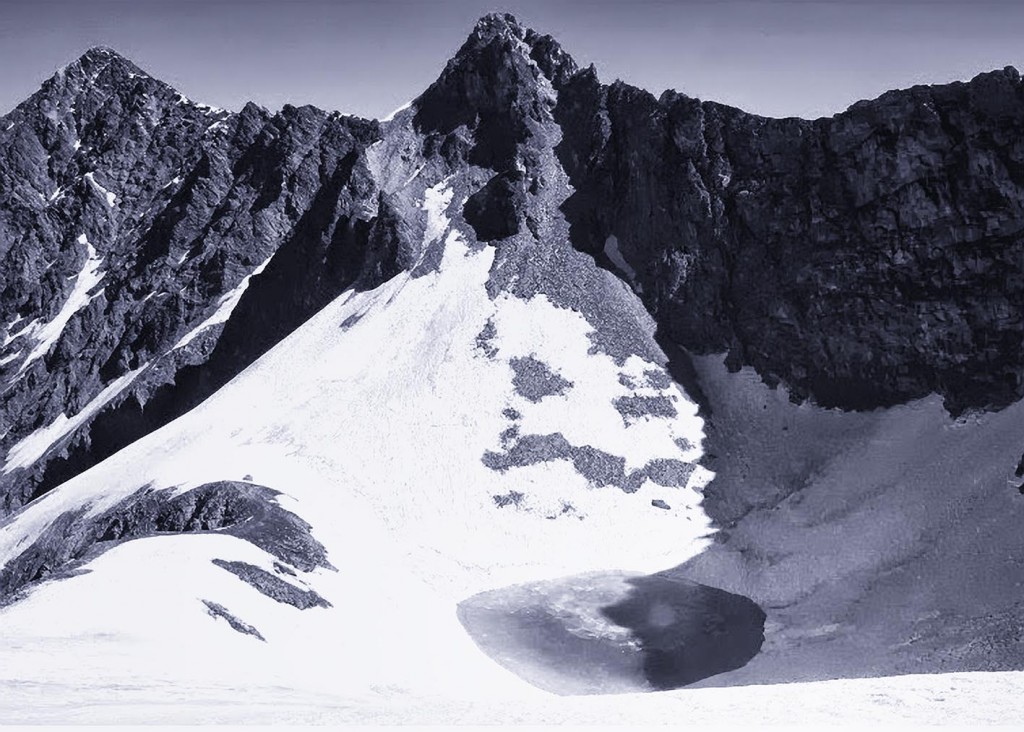
Roopkund lake, India

Human Skeletons at Roopkund lake, India
I was fortunate to be schooled at The Doon School, Dehradun (India), an institution that valued the importance of growth by encouraging us to trek in the Himalayas. In 1983, when I was seventeen, a group of senior students successfully trekked to Roopkund, bringing samples of human bones.
With a sense of curiosity, I asked my housemaster, Mr. Vaishnav, “Why are so many skeletons found around this remote lake?”
Mr. Vaishnav replied, “These are believed to be the remains of General Zorawar Singh’s soldiers who got lost in the Himalayas while returning from the Tibetan plateau.”
Who was General Zorawar Singh?
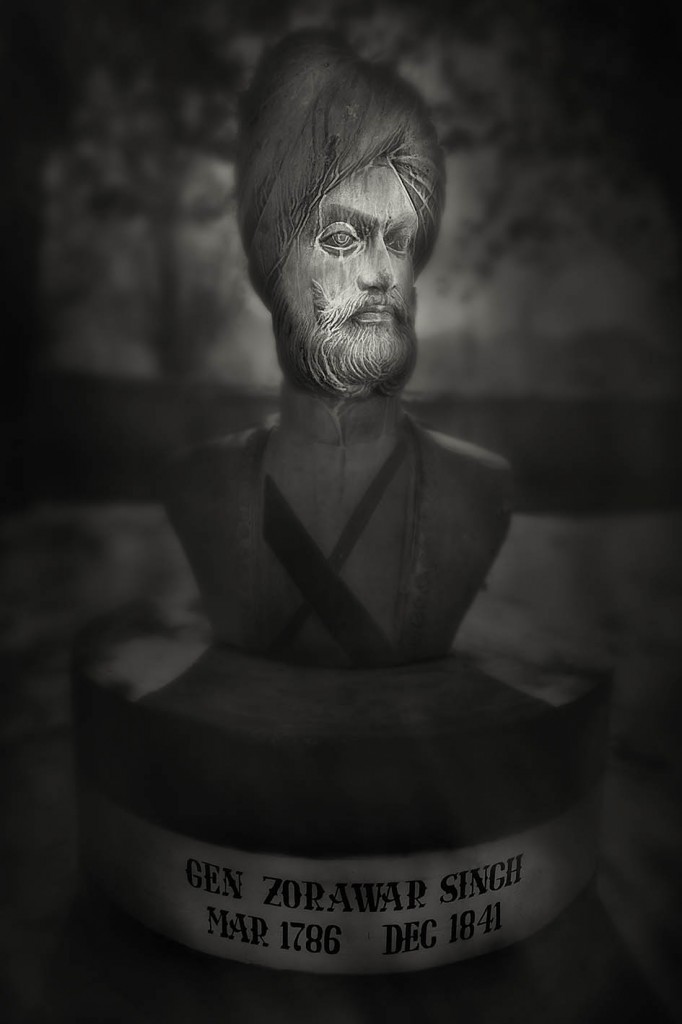
General Zorawar Singh’s statue at Fort in Leh (Ladakh)
The plains of Indian sub-continent since 9th century had been continuously invaded, looted and ruled by many dynasties. It was only with the rise of the Sikh kingdom in Punjab, during the regime of Maharajah Ranjit Singh (1780 – 1839), the “Lion of Punjab”, this trend was reversed.
Ranjit Singh’s military career can be divided into three phases.
- 1799 – 1809 : Consolidation of the Sikh forces, leading to capture of Lahore.
- 1809 – 1823 : Expansion of empire to include Multan, Peshawar and Kashmir. It is in this phase that Hari Singh Nalwa, his trusted General extended the empires reach till Khyber pass, along Afghanistan border. This was a historic achievement as only thereafter no foreign invasion to Indian sub-continent happened from Afghanistan.
- 1823 – 1839 : Consolidation and further expansion. It is in this phase that General Zorawar Singh, operating under the military leadership of Gulab Singh (the Dogra minister in Ranjit Singh’s cabinet who was asked to manage the affairs of Kashmir), led expansionary military expeditions to Ladakh (1834), Baltistan (1840) and Tibet (1841).
The British had conquered the entire India, falling East of river Sutlej and were now limited by the treaty of Amritsar, signed with Maharajah Ranjit Singh, that stopped them from making a westward advance into Punjab and beyond. It also limited Ranjit Singh from capturing territories east of river Sutlej. The only option for expansion of the Sikh kingdom was North of Kashmir into Ladakh.
Zorawar Singh was born at Khalur, now in the state of Himachal Pradesh, which was then a part of Punjab. At a very young age, he rose to become a General in Maharajah Ranjit Singh’s army.
In 1834, General Zorawar Singh led an expedition to Ladakh via Kishtwar, Dachin, Marwah, Warwan, crossing the Lanvila pass at 14,500 feet. At Suru and Leh valley, his forces constructed forts for administration of the region.

General Zorawar Singh with Gyalpo, the King of Ladakh
In October 1835, Zorawar returned to Kishtwar but on hearing reports of rebellion, he immediately turned back and this time took a shorter but more arduous route via Umasila pass at 17,300 feet into Zanskar and Leh, which he reached in ten days. An army crossing at these heights, especially in winter month of November, is one of it’s kind in the annals of world military history. Inclusion of Ladakh in Maharajah Ranjit Singh’s territory is of significant geo-political importance for the present day India. If not for the success of this expedition, with China’s conquest of Tibet in 1950, today it would be a part of China.
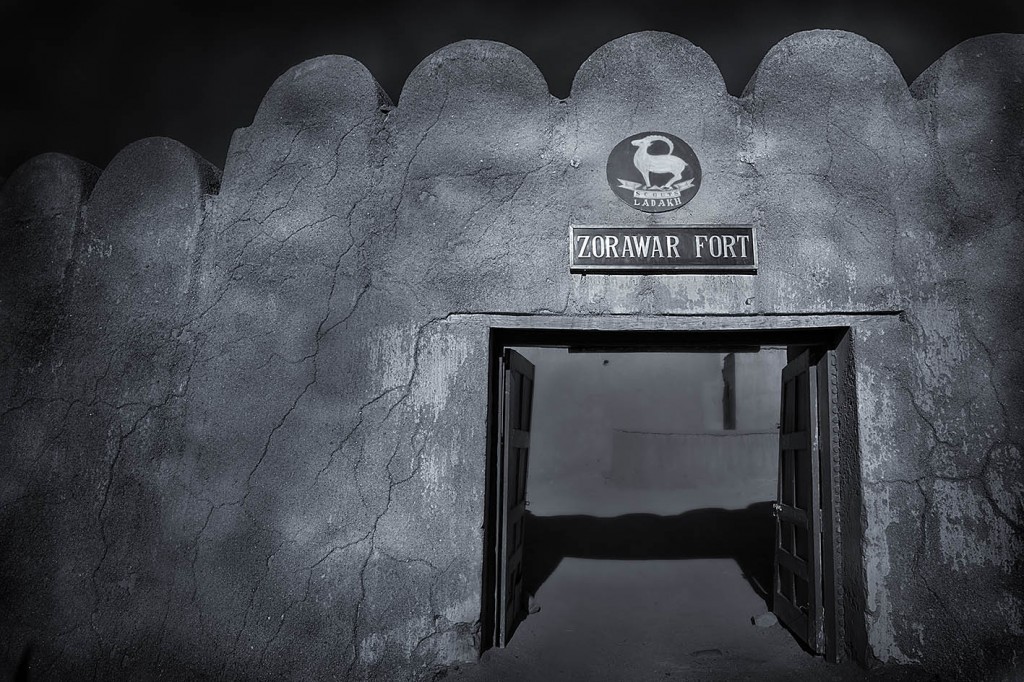
General Zorawar Singh’s fort at Leh, Ladakh

General Zorawar Singh’s fort at Leh, Ladakh
In 1840, Zorawar Singh led an expedition to Baltistan, which is believed to be one of the most rugged mountain regions of the world. It is situated in the Karakoram range to the south of K2, the world’s second highest mountain. Since 1757, Baltistan was under the rule of Ahmed Shah Durrani of Afghanistan. If not for this expedition, Baltistan would today be a part of Afghanistan. Baltistan is the region where live the Dards along with Balti people. Dards are of European origin, believed to be descendants of the soldiers of Alexander The Great (327 BC).
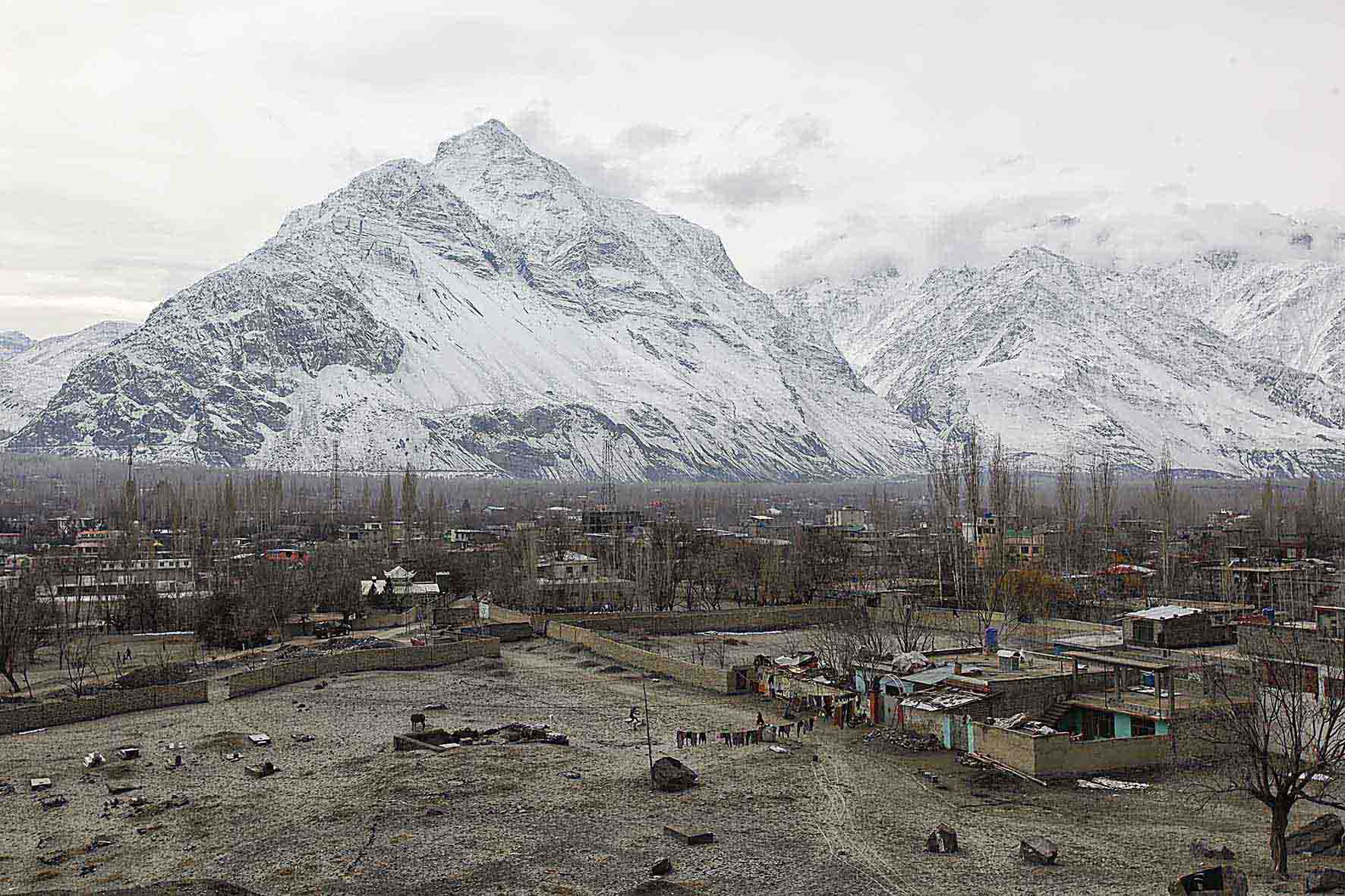
Skardu in Baltistan (Pakistan)
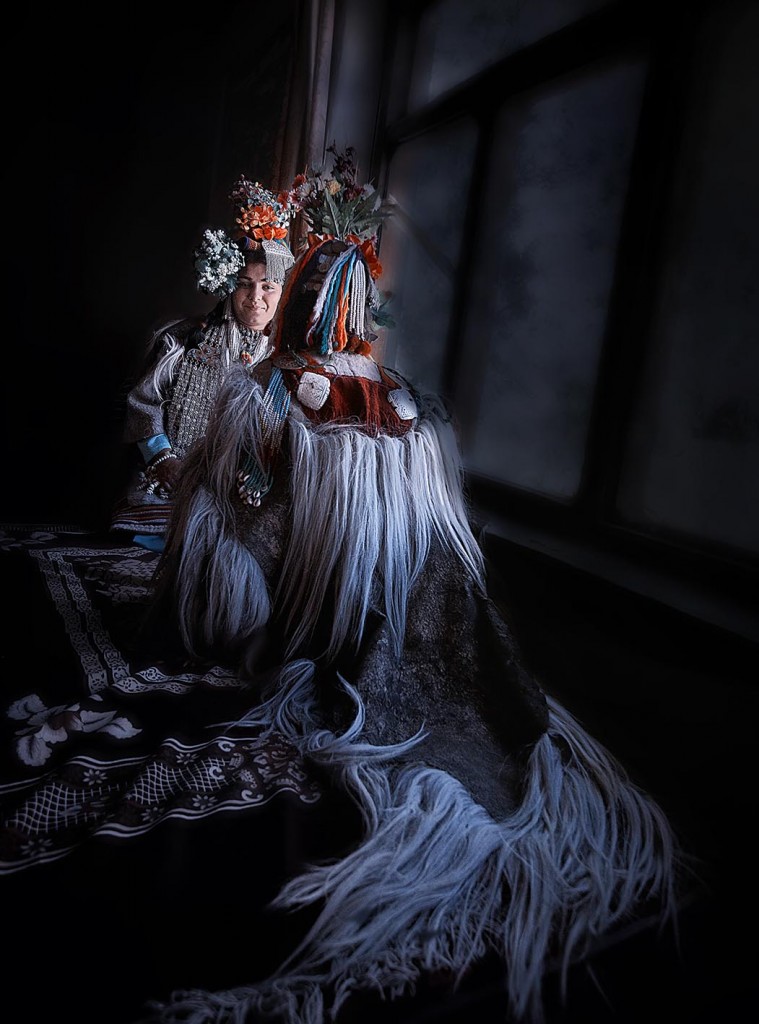
Dard tribes reside in a few villages en-route from Leh to Baltistan
Having conquered Baltistan, General Zorawar Singh returned back to Leh via the Khapalu – Chorbat – Nubra valley route. Nubra valley is a high altitude cold desert at 10,000 feet. It is on the historical silk route.
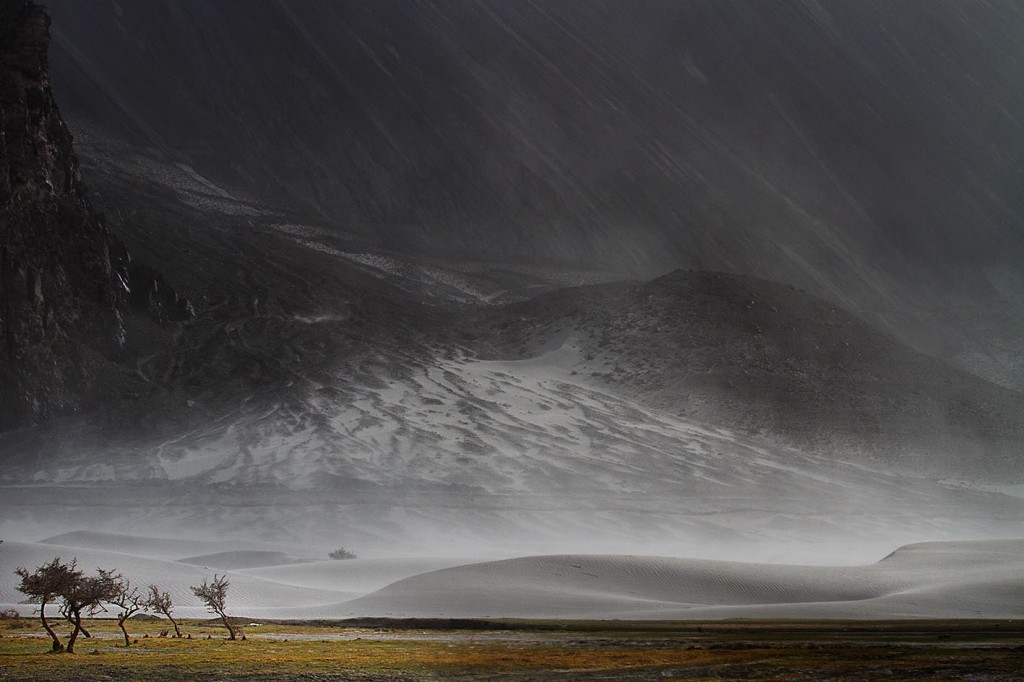
Nubra Valley, Ladakh
In 1841, General Zorawar Singh turned his attention to the roof of the world, which led him to Western Tibet. Crossing Pangong lake at 14,300 feet, at the Ladakh – Western Tibet border, he travelled via Guge kingdom, Tholing, Purang to Mount Kailash and Mansarovar.
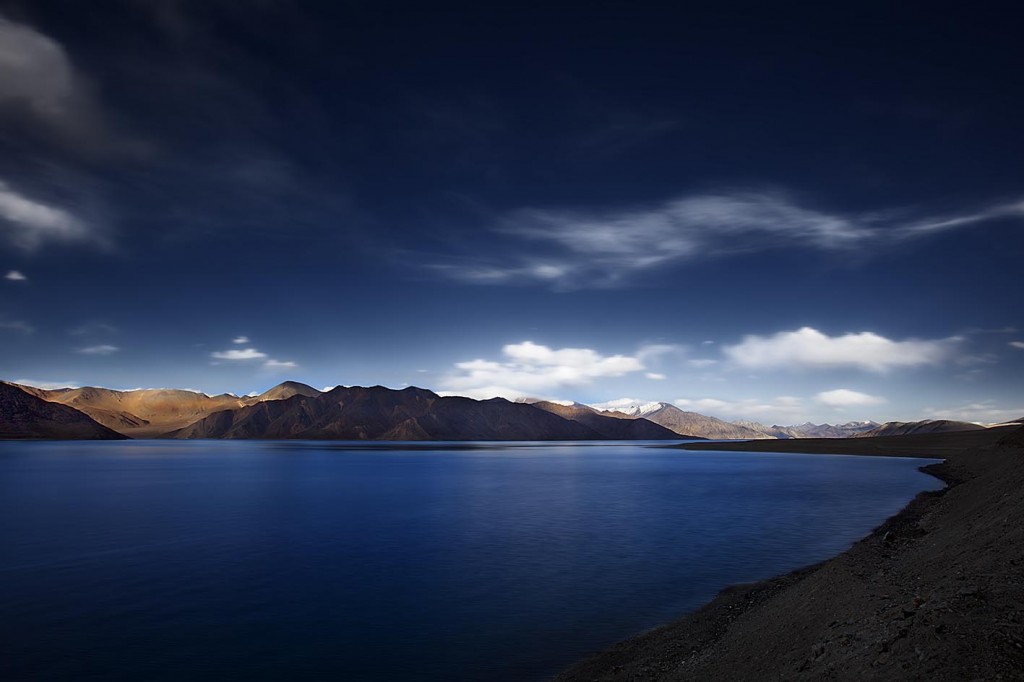
Pangong lake, Ladakh
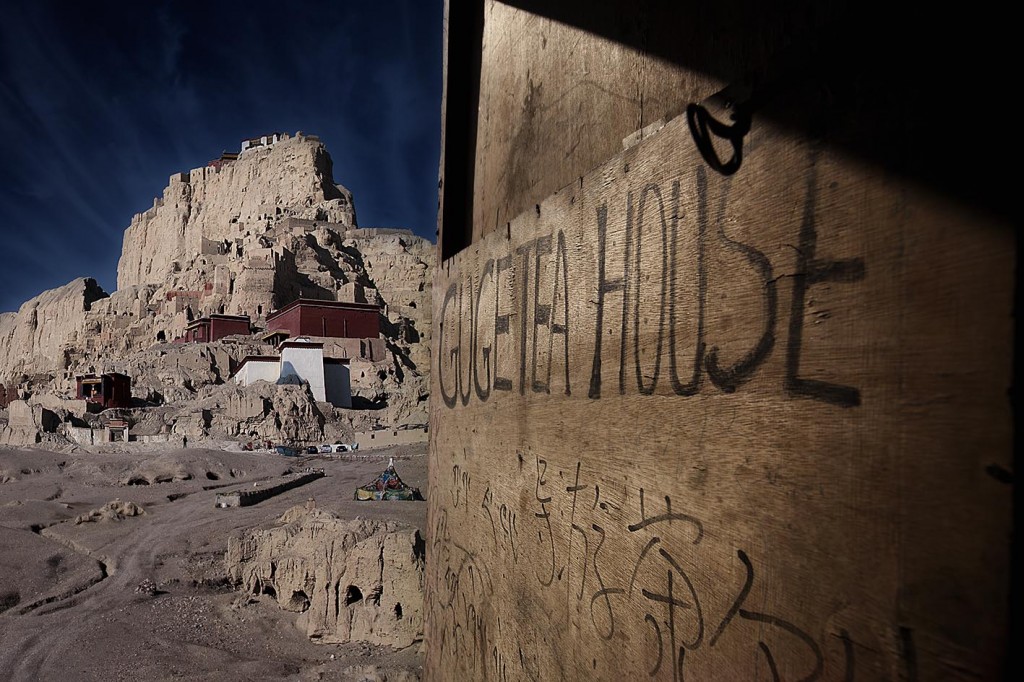
Guge kingdom, West Tibet
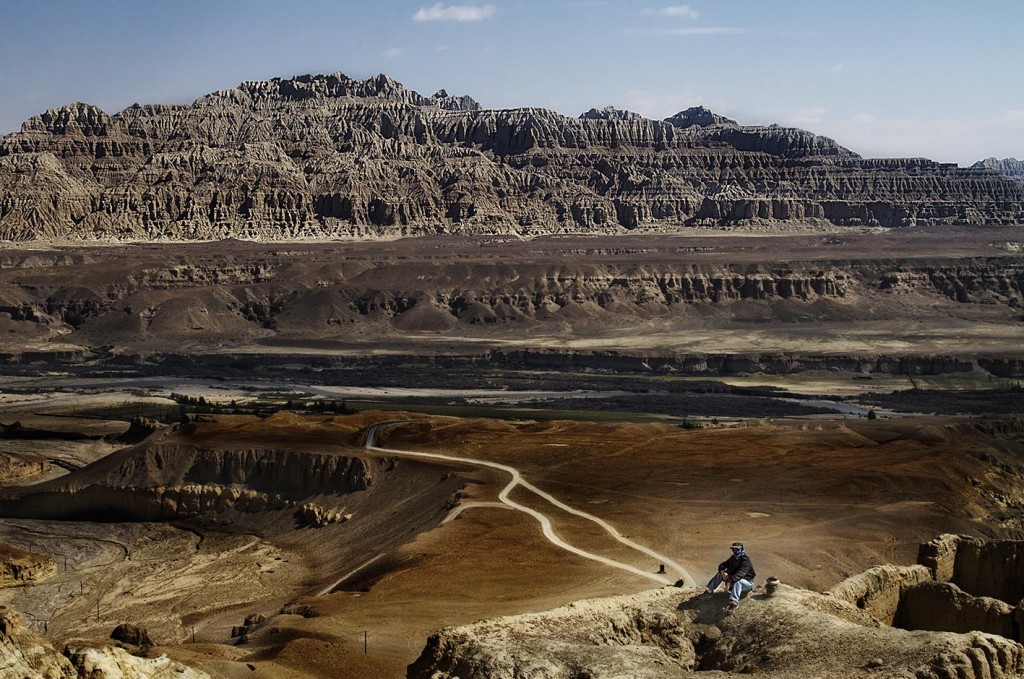
Flow of Sutlej River at Guge kingdom, West Tibet
At Purang Valley, which lies separated from Mansarovar by the Gurla Mandhata range, his forces climbed the Gurla pass and reached Dogpacha. Here they were caught totally off-guard by the Tibetan forces. A fierce hand to hand battle resulted in the victory of Zorawar Singh, who captured the Tibetan army “Colors” flag, which till today lies in possession of the Indian Army.
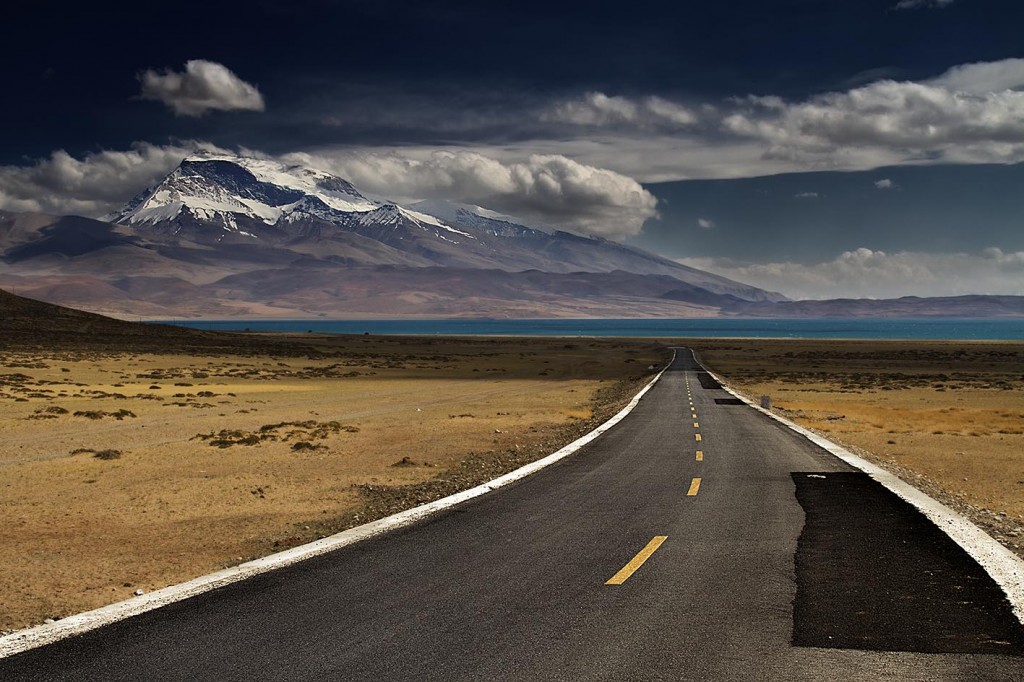
Gurla Mandhata range, Tibet
After the visit to Mount Kailash and Mansarovar, General Zorawar Singh’s army turned South towards Taklakot, where a battle was fought with the Tibetan forces at the high altitude Mayum pass (17,000 feet).

Lake Mansarovar & Mount Kailash, Tibet
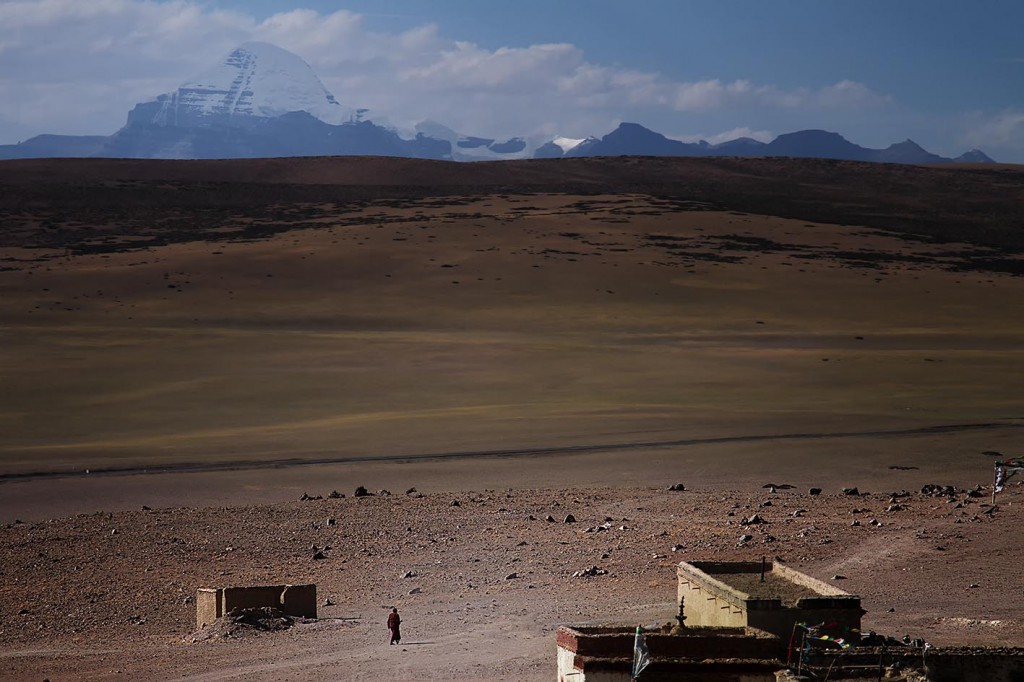
Lake Mansarovar & Mount Kailash, Tibet
In an operation lasting three and a half months, some 550 miles of Tibetan territory was captured by General Zorawar Singh.
In July 1841, GT Lushington, the British Commissioner of Kumaon in India learnt that extensive territories in Tibet have been captured. British were alarmed and decided to send Captain JD Cunningham to the Sikh Darbar in Lahore to discuss the matter as this was seen as a threat to British India. Lahore Darbar remained evasive of Cunnighams queries thus letting General Zorawar Singh have more time to complete his task.
By now the winters were fast approaching. General Zorawar Singh decided to move to Tirthapuri and prepare for the offense in the coming summer months.

Tirthapuri, Tibet
While the General had everything going his way as he had sealed the Mayum pass before arrival of winters but he made a small miscalculation. He did not take into account that forces from Lhasa could also reach via the Matsang pass, which was South of Mayum pass and was negotiable even in the winter months. This was a strategic mistake. In the peak winter months, as General Zorawar Singh’s forces became complacent, the Tibetan forces attacked through Matsang pass and caught them off-guard. High altitude battle in the peak winter months against a large Tibetan force was fought. During the night the weather turned against them with a heavy snow storm. Many soldiers were frost bitten and were dying due to insufficient clothing.
On 12th December, 1841 General Zorawar Singh was hit by a bullet on his left shoulder and died at Taklakot. Even though the morale of the forces was broken, it was only by January 1842 that the last fortifications, under the command of Basti Ram (military officer of General Zorawar Singh) abandoned their positions. With him, many soldiers crossed the Tibetan plateau but only 242 of them reached Askot in Kumaon, which was in the British India territory. From here they continued the journey to Ludhiana and entered the Sikh kingdom to the east of river Sutlej.
General Zorawar Singh’s severed head was carried to Lhasa where it was placed at a thoroughfare for public viewing.

Potala Palace, Lhasa, Tibet (General Zorawar Singh’s severed head was placed outside for public viewing)
The Tibetans however also recognized the valor of General Zorawar Singh and built a Chorten (Cenotaph) at Taklakot in his memory. Even today, the Tibetans call it “Singh ba Chorten” or the Cenotaph of the “Singh Warrior”.
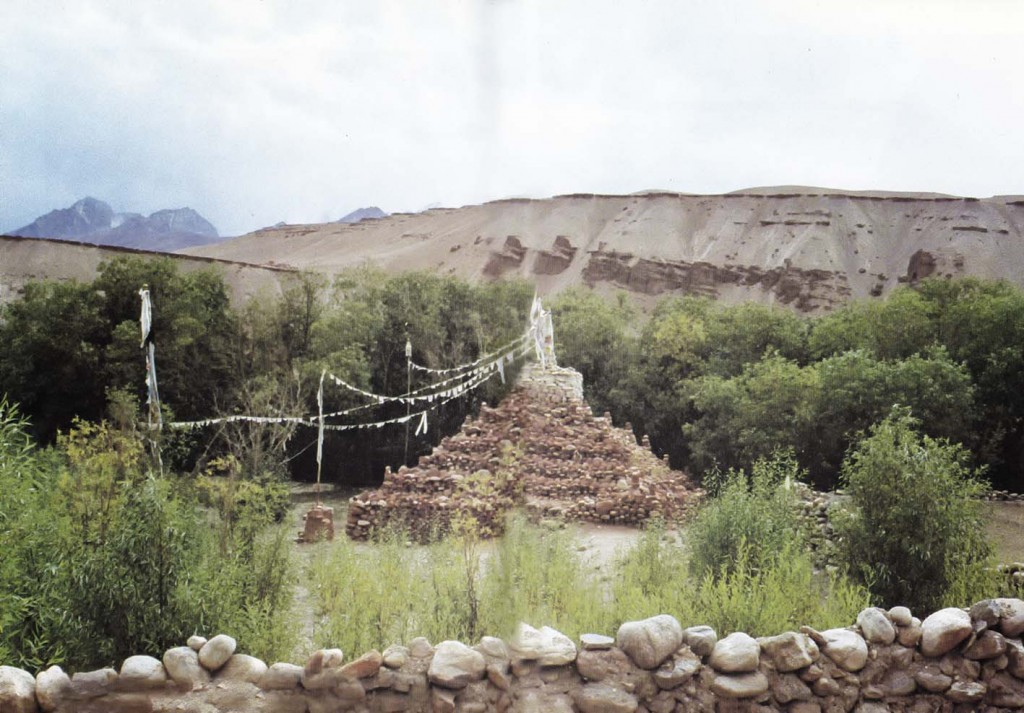
‘Singh-ba-Chorten’ the cenotaph of the Singh warrior at Taklakot, Tibet
About the soldiers who were taken into captivity, Tsepon W. D. Shakabpa, who served as Tibet’s Secretary of Finance from 1930 -1950, writes on page 243 – 244 of his book, TIBET – A Political History : “Over three thousand Sikhs were killed in the course of the foray. Seven hundred Sikhs and two Ladakhi ministers were taken prisoners. The remainder of the defeated army fled…. Those prisoners wishing to return to their country were allowed to do so….. One third of the Sikhs and Ladakhi prisoners elected to remain in Tibet. The Sikhs were resettled in warmer regions of Southern Tibet by the government and many married Tibetan girls. The Sikhs are known to have introduced the cultivation of apricots, apples, grapes and peaches into the country.”
The pistol of General Zorawar Singh is a part of the private collection of Sukbinder Singh in UK.
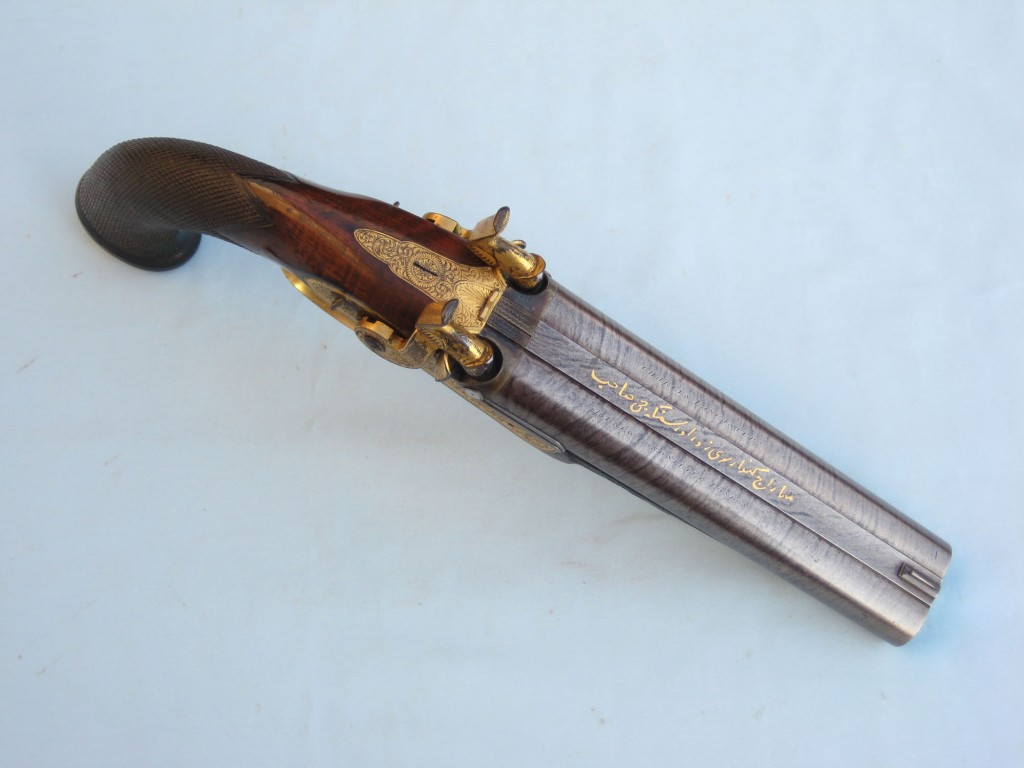
General Zorawar Singh’s pistol in a private collection in UK
So what about the skeletons at Roopkund lake? Are these of the retreating soldiers accompanying Basti Ram, who may have lost their way and perished at the high altitude?
A recent expedition to Roopkund lake by a National Geographic team retrieved about 30 skeletons and their carbon dating has placed the time of mass death to 9th century AD. While the mystery of Roopkund, through scientific investigation has negated it’s linkage to the Tibet expedition of General Zorawar Singh, but a curious conversation with Mr. Vaishnav at The Doon School in the year 1983 has sub-consciously led me to these remote places, tracing the footsteps of General Zorawar Singh.
A journey performed over thirty years has made me realize that ‘not all who wander are lost’.

Comments(59)
Manpreet Singh says:
September 25, 2013 at 12:05 amAmazing work, beautifully explained. General Zorawar Singh puts me to shame – we have wasted this life !
Keshav says:
July 5, 2014 at 10:33 amIndeed, on feels so small against the daring of Zorawar Singh.
Amit says:
September 25, 2013 at 12:29 amAwesome! Fantastic account & Pictures are just great as always…
Just wondering ..Is there a sikh population in Southern Tibet now as well
Chandeep says:
September 25, 2013 at 1:35 amvery nicely put
would love to get the details of the journey
makes me want to go there
Karamjeet Singh says:
September 25, 2013 at 3:11 amA wonderful History Lesson.I had a vague knowledge of the expedition and it was considered futile,but now I know the resultant geo-political advantage The Sikh General left behind for India.India needs to honor the General in a befitting manner.Thanks Amardeep for the photos and wire up.Good going…
Arvinder Singh says:
September 25, 2013 at 6:36 amThe service you are doing is just awesome. If possible can you put up a map trailing the path Gen. Zorawar Singh took. Articles from the last so many weeks all linked up nicely into this journey. Thanks for sharing the history with everyone. Pass this to the Sikh Digital Library project so it can be preserved and used for research.
Amardeep Singh says:
September 25, 2013 at 8:11 amAmit,
On your question above.
Presently there is no Sikh population in Tibet. If what is written in the text of the earlier Tibetan Finance Minister’s book, as quoted in my blog, is true, then either the Sikhs have assimilated in the local population or due to harshness of environment, have moved back to India. Surely after the Chinese Cultural revolution in 1950 and thereafter the Chinese occupation of Tibet, there would have been no choice but to move back to India.
In my travels to remote Western areas in Tibet, I did homestays and here the older generation could still speak some words of pahari, which is a mix of hindi and punjabi. The language was used freely before 1950s, when trade used to happen through Spiti and Ladakh regions of India.
Amardeep
Harawant Singh says:
September 25, 2013 at 9:54 amHistory re-written. Syabus on research and superb photography.
Amarpal Matharu says:
September 25, 2013 at 11:12 amAmardeep,
Great research, photography and concise narration on Sikh history. We are very proud of you!
Amarpal
PP Singh says:
September 25, 2013 at 12:45 pmBeautifully articulated historical fact leaves me mesmerized.
Dhiraj says:
September 25, 2013 at 1:34 pmWhat an incredible journey! You have traced Gen Zorawar Singh’s footsteps aided by awesome pictures amazingly well! Thank you Amardeep for this fabulous history lesson…wish history as a subject can be made so interesting at schools!
Col. Harindar Singh Bedi says:
September 25, 2013 at 10:43 pmThis has been passed on to me by my son, Hapreet.
My compliments on a very well-researched piece on General Zorawar Singh. One cannot but marvel at the ‘audacity’ shown by Maharaja Ranjit Singh through his generals (including Hari Singh Nalwa). Well led, the Sikh army could overcome stiff resistance in such inhospitable territory. Can one imagine today that the Sikh kingdom’s pennant once flew over the roof of the world?
Col. Harindar S. Bedi
Rajinder Pal Singh says:
September 25, 2013 at 9:49 pmA beautiful historical account so well supported by excellent photographs speaks volumes of your talent, Sardar Amardeep Singh ji. May Waheguru, the Akalpurkh, be with you, always. Gurfateh.
Jaspal Sehdave says:
September 25, 2013 at 11:20 pmYou are truly blessed to visit such rare places and not only revisit history but re-account it and share it with us as if we are there to see it for ourselves …. Great!!
Nargis Seemab says:
September 26, 2013 at 2:29 amI am Durrani Afghan, but got married to a sooraj bansi rajput, Shahi family member. we both are history lovers and like to read and discus such topics. we both are proud on our origins. My husband always admire Ranjeet singh.
i have a topic Zorawar singh for today discussion with my husband.
thanks for sharing.
JOhn Arifin says:
September 26, 2013 at 11:12 pmAmardeep, I have been hearing bits and pieces of the story from you all this while.
Now the complete story with illustration. Well done and well researched with beautiful images.
Uma says:
September 27, 2013 at 12:56 pmGreat work! I keep reading South Indian History of Chola Pandya and Pallavas… first time, I found history about North India interesting….. very well written article with good photographs. Would love to read more on Mount Kailash and Mansarovar..
Anand Swaroop says:
September 28, 2013 at 9:43 amGreat pictures and wonderfully written concise article. I had a chance to visit Tibet twice and also the museum at Leh, but was not aware of the completely researched life of Gen Zorawar Singh. Would like to read more about his life and possibly retrace his route of travels.
Mohindra Chadha says:
October 3, 2013 at 3:11 pmExcellent pictures and the narration.
The National Geographic carbon -14 dating of 30 skeletons places some doubts about the mass death. These skeletons must be from an other era. More research needs to be done to clear the mystery!
Arjit Mahal says:
October 4, 2013 at 7:56 amAmardeepji – I have become your fan. While I have read a lot about Sikh Raj, I knew very little about Ge. Zorawar Singh’s campaign. You have made this part of the history come alive for me. Best wishes
Ramandeep Singh says:
October 5, 2013 at 10:46 amWhat a great piece of history. Never in south Asian sub continent any one dared to conquer other side of Himalayan mountains deep into Tibet before Sikh Raj.
So wonderful to read about Sikh warriors that actually made it happen.
Thanks for research.
punjabibolo says:
October 5, 2013 at 1:26 pmwonderful achievement man… god bless you very soon will published your website and articles in my blog Thanks
Birender Singh says:
October 6, 2013 at 10:46 amVeerji, you are doing marvelous work but i think if you can share your findings with other similar scholars having interest in Sikhi History like Sukhpreet Singh Udhoke (http://itihas.net/main/index.php?option=com_content&view=article&id=32&Itemid=94) or Punjab Digital Library, it would be wonderful. “Hoye Ikattar milo mere Bhai”
Andrew Johns says:
October 7, 2013 at 2:27 amStunning photography. Interesting research. Glad to see a seed planted when you were 17, gestate and flower over the years.
PS: a small nit. I don’t think Ranjit Singh or the Sikhs of 17th and 18th century were motivated by the same nationalistic fervor of protecting the “Indian sub-continent.” Nationalism is a relatively recent phenomenon. And India as we know it today, never really existed. Most maps of Ranjit Singh’s period or pre-Ranjit Singh identify the “Panjaub” as an area distinct from “Hindoostan” (India). Ranjit Singh was motivated, as any sensible ruler would by the welfare of his state, not Indian or even Sikh nationalism. We’d be projecting current biases back on a different time, a common instinct when analyzing history.
Amardeep Singh says:
October 7, 2013 at 8:33 amThanks Andrew Johns,
Happy that you found this piece interesting.
Indian subcontinent, before the British bought it under a single leadership, did exist fragmented into small kingdoms. However there was a common cultural, religious and linguistic (minor variations of North Indian languages) thread that integrated the people to freely move between the states and contribute to each other. If not for this aspect, why then would Maharajah Ranjit Singh have contributed Gold to Vishwanath temple in Varanasi? Why would the Sikhs have returned the valuables to the Jagarnath Temple in Puri, which they recovered from the retreating plunderers from Afghanistan, who came to the sub-continent to loot? Why would Maharajah Ranjit Singh provide Sikh soldiers to the Nizam of Hyderabad? Why would he build a memorial Gurudwara at Nanded in central India where Guru Gobind Singh left this world?
I can go on with the list of whys? However the point remains that the many states that made the Indian sub-continent had a commonality and were also distinct from each other.
The contribution of Maharajah Ranjit Singh to the India sub-continent being that before the Sikh kingdom was annexed by British, he had succeeded to expand it to Peshawar in East and in North to Baltistan and Ladakh. If not for this expansion, the India of today would not be sitting strategically on the high altitude passes of Ladakh, which could have fallen in the Chinese territory after their occupation of Tibetan plateau.
The story of India is very complicated, Andrew. It needs a holistic approach to understand the various dynamics in play.
Lalli Brar says:
October 7, 2013 at 9:23 amGreat thank you
varinder singh jawanda says:
October 7, 2013 at 10:31 amAbsolutely magnificent narration and presentation of a largely unknown historical event .. very impressive illustration and relevance
Uday says:
October 7, 2013 at 11:39 amThe boundaries of India, the separation of India and Pakistan, and how the British seemed to have made their decisions, all appear in a whole new perspective now.
Where is all that bravado and sense of adventure gone amongst us?
Thank you for a wonderful account of Gen Zorawar Singh, Amardeep.
Savithri Kalidhas says:
October 7, 2013 at 9:56 pmWhat a wonderfully written piece and the pictures just speak to you. It was like watching a documentary. Thank you for bringing such heroes into the limelight.
Narinder says:
October 9, 2013 at 9:10 amThanks to my friend Alvinder for sharing this.What an amazing journey into the pages of history through an equally amazing photography.
Sanjay Pal Singh says:
October 9, 2013 at 7:20 pmMy Compliments Amardeep Ji! Your narration of facts literally brought tears of pride in my eyes. Please keep up this great work, i will kepp following for sure.
Chitrang says:
October 9, 2013 at 8:08 pmExcellent narration, nice camera work. Told the history about Zorawar singh, Indeed a great warrior, but I guess Rooopkund mystery wont be solved
Abhishek says:
October 14, 2013 at 11:29 pmVery well written piece.
Krishnan V says:
October 15, 2013 at 1:07 amAmazingly well researched and wonderfully narrated . kudos !
Inderjeet Singh says:
October 18, 2013 at 4:38 amAwesome photos. I knew the story except from the extract from Political History of Tibet. The history with stunning photography is simply out of this world! I am interested to know about the man, Zorawar Singh. Could you give some pointers? Dogra/Hindu website seem to suggest he was a Hindu Dogra. Some say he is Hindu Rajput. Are you aware of his background?
Amardeep Singh says:
October 19, 2013 at 11:47 amInderjeet,
It does not matter what faith Zorawar may have been born in. He was though born in Kahlur, in current Himachal Prades, which in those days was a part of Punjab. The reign of Maharajah Ranjit Singh was very liberal and his army made up of European, Hindu, Muslim and Sikhs. They collectively fought for the defense and expansion of his kingdom, as his employees. Zorawar singh was a General of Ranjit Singh’s army and that’s what matters as he never differentiated the ranks on account of religion.
In the reign of Maharajah Ranjit Singh, virtually all his generals had started supporting beards and turbans, the visible Sikh forms. So much so that check the picture of his artillery commander, Sir Alexander Gardner, in a full sikh appearance, though he was a European.
From the Tibetan history perspective, the attack by Zorawar’s forces is mentioned in their history texts as an advance by Sikh kingdom. It is therefor important to read history from the perspective of the ones who were being attacked.
Also note that the British on hearing about the advances of Zorawar Singh in Tibet, sent their officer, Captian J D Cunningham to Lahore darbar to find out about this advance. This means the British saw the leadership under the Maharajah based in Lahore, who at that time was Sher Singh as Ranjit Singh had died.
So the supreme leadership was that of Ranjit Singh and the rulers thereafter that approved of the advances to Baltistan, Ladakh and Tibet.
Ravinder Singh says:
October 21, 2013 at 1:14 amAmazing history and photography! Wish history books were this interesting. Appreciated your effort.
Subhash Kale says:
October 24, 2013 at 12:24 pmScientists from Deccan College, Pune, India made the documentary for National Geographic
Mohinder Gulati says:
November 13, 2013 at 7:21 amMy compliments to you for exploring the segment of the Sikh history that is not very well known or published unlike the events relating to Maharaja Ranjit Singh.
Zorawar Singh was a great and a selfless general!
dr gp singh says:
December 12, 2013 at 12:25 amHave read this earlier too.
Such should find a place in our history books in schools. Great effort.
Inderjit gill says:
December 22, 2013 at 12:29 pmBreathtaking photography, and incredibly well written account .
Gurpreet Singh Anand says:
January 3, 2014 at 11:29 pmWhat an insight into the closed ,forever,chapters of Sikh History where historian have toed official lines be it British or Independent India.You have done a commendable job in unearthing long forgotten saga I suggest you to check historical and official records kept in Panjab Archives in Lahore as Lahore was Ranjit Singh’s capital and official records lithographs of his time are best preserved there .I will delve more ,and if I can will share what I find in printed works .Meanwhile do update me whatever new you uncover in this tryst .Without saying , you have Blessings from Up There to do this selfless job for coming generations .
Gurjender Singh says:
January 12, 2014 at 1:01 pmToday I was watching Sikh Channel TV from UK, Dr. Sukhjeet singh mentioned that there is documentary is being made and will be released about General Zorowar Singh. When it will be released and how I can get a copy.
RS RAJPUT says:
January 13, 2014 at 10:03 amIt makes us very proud to learn about our illustrious ancestors. We never knew that our native army had the capability of Hannibal who crossed the Alps with elephants or Napoleon who marched his troops from France to Moscow. We can be proud of Gen Zorawar Singh. It is hoped that the Indian Military Academy and the Officers’ Staff College will do further research on our native military prowess and genius and make it compulsory reading in the study of military history.
Ajnauda says:
January 14, 2014 at 11:55 pmThanks AmarDeep Singh
Daljinder says:
January 15, 2014 at 5:31 amThanks for sharing … Great work
ਬਲਵਿੰਦਰਪਾਲ ਸਿੰਘ ਖਾਲਸਾ says:
January 15, 2014 at 5:38 amਜਰਨੈਲ ਜ਼ੋਰਾਵਰ ਸਿੰਘ ਦਾ ਸੰਘਰਸ਼ਮਈ ਜੀਵਨ ਪੜ੍ਹ ਕੇ ਬਹੁਤ ਮਾਣ ਮਹਿਸੂਸ ਹੋਇਆ। ਕਦੇ ਅਸੀਂ ਵੀ ਖਾਲਸਾ ਰਾਜ ਦੇ ਮਾਲਕ ਸਾਂ ! ਤੇ ਸਾਡੇ ਮਹਾਰਾਜਾ ਰਣਜੀਤ ਸਿੰਘ ਨੇ ਤਿਬਤ ਤੱਕ ਖਾਲਸਾ ਰਾਜ ਕਾਇਮ ਕੀਤਾ। ਗਮਗੀਨ ਕਰ ਦਿਤਾ ਖੁਸੇ ਹੋਏ ਰਾਜ ਦੀਆਂ ਯਾਦਾਂ ਨੇ। ਸ਼ਾਇਦ ਕਦੇ ਫਿਰ ਵਾਹਿਗੁਰੂ ਜੀ ਕਿਰਪਾ ਨਾਲ ਖਾਲਸਾ ਰਾਜ ਦੀ ਪ੍ਰਾਪਤੀ ਹੋਵੇ। ਮਹਾਨ ਜਰਨੈਲ ਜ਼ੋਰਾਵਰ ਸਿੰਘ ਨੂੰ ਹਜ਼ਾਰਾ ਸਲਾਮ ਤੇ ਸੈਲਿਊਟਸ !
Majhail Singh says:
January 15, 2014 at 12:48 pmUndoubtedly S.Amardeep Singh’s work is marvelous and a mile stone in The Sikh History .Despite of I being student of Sikh History in my post graduation , I never read about Gen. Zoravar Singh’s Expedition to Tibet in such a way as now from this Article ,It means Sikh history from the Time of Guru Nanak Dev ji requires afresh look as is being done by S .Amardeep Singh . Thanks for the photos shared to understand how the expedition was a tough job.
Raj sekhon says:
January 15, 2014 at 3:31 pmFeelings proud
H.S.Dhami says:
January 15, 2014 at 5:43 pmA great work and sincere effort by Amardeep Singh to trace the Sikh History.Very informative and makes me feel proud .
Harinder bir singh jaspal says:
January 20, 2014 at 6:41 amAmazing. I have tears in my eyes what a rich history we have. Thanks to S. Amardeep Singh ji Keep up the good work. I am sure there is more to discover.
LT COL RSMODGIL says:
February 2, 2014 at 1:48 pmu have done a very good research in our militaey history.
It is commendable, keep it up.
alittle more resarch can lead to a book on tne genral.
LT COL RSMODGIL says:
February 2, 2014 at 1:50 pmgod job.
convert it into a book,
shahid says:
February 24, 2014 at 8:41 pmVeer ji you are doing very grate God Bless you and keep it up with all your best…Shah
https://www.facebook.com/savehistoricalplacesofpakistan
shashi rai says:
June 24, 2014 at 3:17 amBrilliant, being a history buff, this is excellent addition to my knowledge.
i have read the history about Maharaja Ranjit Singh and his great general Nalwa. did’t have this much information about Zorwar Singh.
thanks Again.
Amrinder says:
July 31, 2014 at 7:10 pmGeneral Zoravar Singh was hindu paharia and not the sikh as majority of the readers misinterpret . He was employee of Lahore Durbar and the success of Maharaja Ranjit Singh’s Lahore Durbar was due to secular approach as most of the generals were muslims and hindus .
Zoom says:
July 31, 2014 at 10:19 pmI hardly drop responses, but I read a ton of comments on this page Thirty years – In search of General Zorawar Singh
(1786 – 1841) | Amardeep Photography.
bikram says:
September 30, 2014 at 8:49 pmBrilliantly Expressed and photographed. Spell bound.
Ajay Tripathi says:
January 12, 2015 at 11:38 amI would like to thank you about this interesting info which I never knew and am sure majority of people like me with interest in history would know.
I could walk through the path of Gen Zorawar Singh through your photographic evidences.
Really great!!